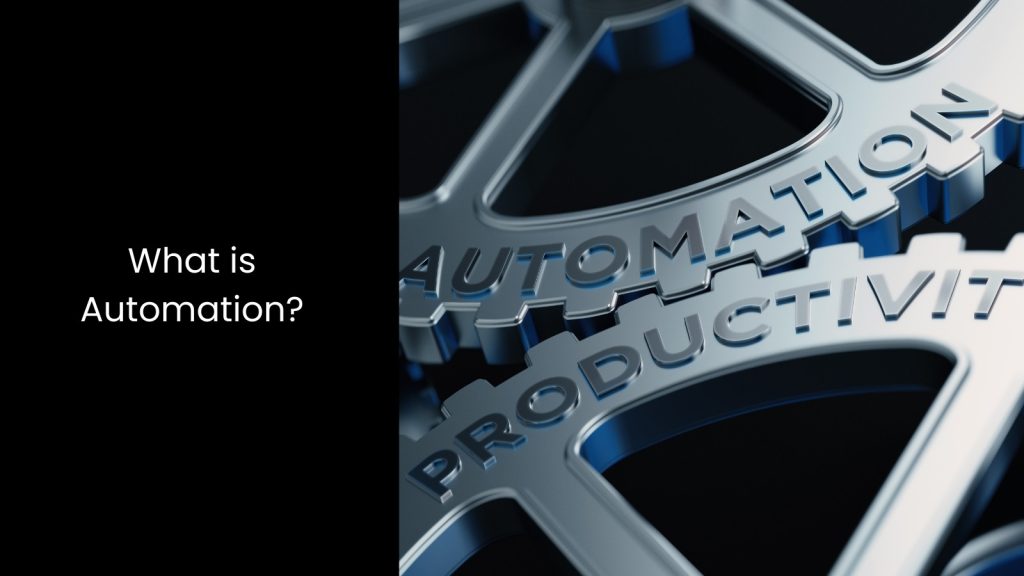In this article, we go beyond predictions and find the answers to the most asked question, ‘How does increasing automation lower manufacturing costs?’
We will reveal
- What is Automation?
- How Does Increasing Automation Lower Manufacturing Cost- Top 10 Ways
- Automation Reduces Manual and Repetitive Work
- Automation Lessens Human Errors
- Automation Streamlines Process Improvement
- Automation Speeds Up Processes
- Industrial Automation Enhances On-Site Safety
- Manufacturing Automation Facilitates Real-Time Information Sharing
- Automation Boosts Workforce Morale
- Automation Optimises Material Management
- Manufacturing Automation Increases Customer Satisfaction
- Industrial Automation Supports Scalability
- Cerexio MES with Smoother Automation Compatibility for the Manufacturing Industry
- Lowering Manufacturing Costs and Gaining Maximum Profits via Right Technologies
What is Automation?

- If we look back at history, the first self-operating device, a water clock float regulator, was invented in 270 BCE. This is when ‘Automation’ comes under the radar, and it basically refers to any system or mechanism that moves or operates independently.
- By the late 18th century, Oliver Evans designed the first fully automated flour mill, showcasing the potential of self-directed systems in manufacturing. However, modern industrial automation relies on advanced technologies like PCs, PLCs, PACs, and industrial communication systems to manage processes such as controlling liquid flow, air pressure, temperatures, and rates.
- The heart of these systems lies in their control systems, which regulate behaviours using control loops. Closed-loop control systems utilise feedback from sensors to maintain variables at desired setpoints. Beyond regulation, automation performs critical tasks like calculating setpoints, monitoring processes, ensuring quality control, and scheduling maintenance. These capabilities make manufacturing more efficient and reduce downtime while improving data accuracy.
- With automation, industries achieve higher reliability, better process performance, and seamless reporting.
How Does Increasing Automation Lower Manufacturing Cost- Top 10 Ways

Automation Reduces Manual and Repetitive Work
As the latter automates essential but tedious activities, businesses reduce operating costs and create opportunities to focus on high-value tasks that drive growth and innovation. This is where the employees can redirect their time and energy toward strategic goals, increasing productivity and contributing to revenue generation.
Automation transforms processes by ensuring faster and more consistent task execution, which improves overall efficiency. With fewer repetitive responsibilities, teams experience reduced workloads and greater motivation, leading to better performance.
Automation Lessens Human Errors
However, if automation is in place, it eliminates this risk by performing tasks with consistent accuracy and precision, which humans may struggle to maintain over time.
Automated systems provide greater control and reduce variability, ensuring processes run smoothly and deliver predictable results. When minimising errors, automation improves the quality of work and enhances a company’s reputation for reliability.
Automation Streamlines Process Improvement
Unlike manual tasks, which often lead to inconsistencies and make tracking difficult, automated activities provide reliable and actionable insights.
If they can monitor performance continuously, businesses can quickly spot bottlenecks and delays that hinder progress.
Automation Speeds Up Processes
You know, employees often work differently, and managing these variations across a team can become expensive and time-consuming. Automation eliminates these inconsistencies and minimises errors in critical tasks like structural analysis, estimations, detailing fabrication, and on-site execution.
When automating and streamlining processes, businesses accomplish more in less time using fewer resources, which leads to profit-making.
Industrial Automation Enhances On-Site Safety
With access to accurate and timely insights, teams can identify potential risks early and take proactive measures to avoid dangerous situations.
In other words, automation creates a more controlled and predictable environment, which lowers the likelihood of accidents and improves overall workplace safety.
Manufacturing Automation Facilitates Real-Time Information Sharing
It allows teams to access and source data in real-time, boosting business transparency and efficiency. Accurate and instantly available data ensures decision-makers rely on relevant insights tailored to their needs.
As automation enhances data accessibility, it simplifies complex processes and strengthens communication across departments. By fostering a seamless flow of information, automation reduces delays, eliminates guesswork, and improves overall coordination.
Automation Boosts Workforce Morale
Automation boosts workforce morale by creating regular and predictable workflows, making resource management smoother and more efficient. It helps managers assign the right employees to suitable projects at the right time, enhancing job satisfaction. Repetitive tasks rarely motivate employees, but automation eliminates these tedious duties, allowing staff to focus on meaningful and creative work.
This shift not only increases their enthusiasm but also drives productivity.
Automation Optimises Material Management
When it is possible to integrate automated analysis into the early design phase, it is also possible to identify opportunities for material optimisation and reduce waste. This automated system simultaneously analyses structural designs for compliance with codes, allowing engineers to make informed decisions quickly and efficiently.
This streamlined approach to material management not only optimises storage and logistics but also reduces environmental impact and enhances sustainability efforts.
Manufacturing Automation Increases Customer Satisfaction
Manufacturing automation helps reduce bottlenecks and errors, leading to smoother operations and more accurate project delivery.
When a company consistently delivers projects on time and without issues, it strengthens its reputation and stands out as a preferred choice for future work.
Industrial Automation Supports Scalability
As companies expand, automation helps them maintain consistent production levels, quality, and efficiency. Businesses can handle larger volumes of work by automating repetitive tasks without sacrificing performance. Automation also simplifies the process of adding new tasks or increasing production capacity.
Cerexio MES with Smoother Automation Compatibility for the Manufacturing Industry

Cerexio offers a powerful MES solution that comes with higher and smoother automation compatibility for the manufacturing industry. Our solution is powered by Industry 4.0 capabilities, which streamline production processes, enhance real-time data flow, and ensure better coordination between machines and operators. This reduces downtime, improves efficiency, and boosts overall productivity, supporting manufacturers in achieving optimal performance.
Lowering Manufacturing Costs and Gaining Maximum Profits via Right Technologies

The integration of automation into manufacturing processes is no longer a futuristic concept but a necessity for survival. Businesses can significantly lower operational costs when they streamline operations, reduce labour costs, and enhance efficiency. This, in turn, directly impacts the bottom line, leading to increased profits. So, embracing the right technologies is not just an option; it is a strategic imperative for manufacturers seeking long-term success and profits.
